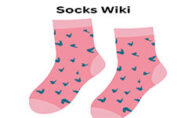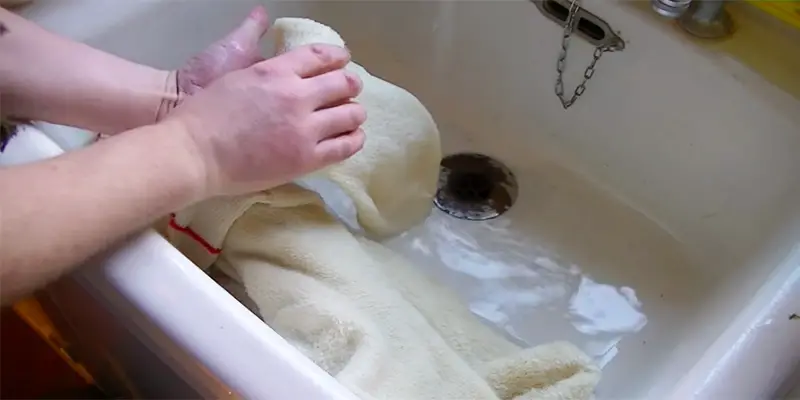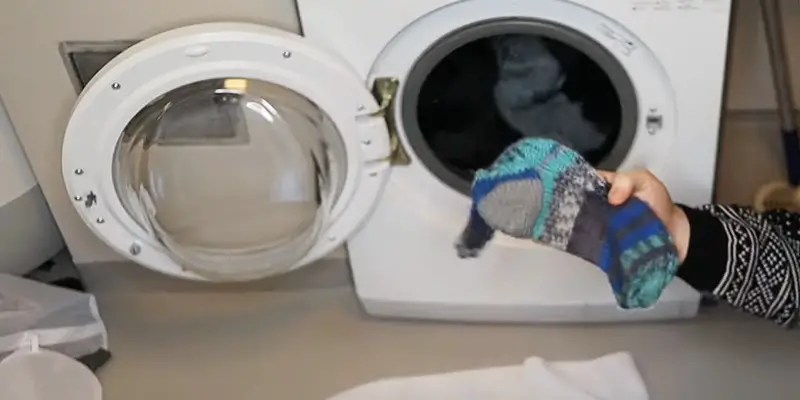Hi, I'm Christopher Bevans, the creator of SocksWiki.com. With a background in fashion design and a passion for innovation, I’m here to share my knowledge on socks from troubleshooting tips to detailed buying guides. I believe the right pair of socks can make all the difference, and through this site, I aim to help you find the perfect fit for every occasion.
Hi, I'm Christopher Bevans, the creator of SocksWiki.com. With a background in fashion design and a passion for innovation, I’m here to share my knowledge on socks from troubleshooting tips to detailed buying guides. I believe the right pair of socks can make all the difference, and through this site, I aim to help you find the perfect fit for every occasion.
Washing white socks at the right temperature is key to maintaining their brightness, cleanliness, and longevity.
While warm water (around 40°C/104°F) is typically ideal for regular washes, as it effectively removes dirt and light stains without damaging the fabric, hot water (around 60°C/140°F) is better suited for deep cleaning heavily soiled socks and eliminating bacteria.
However, using hot water frequently can cause shrinkage and wear. For delicate fabrics, cold water is gentler and helps preserve the material’s integrity.
Choosing the appropriate temperature based on the fabric and level of soiling ensures your white socks stay fresh and vibrant.
Learn What Temperature to Wash White Socks
When washing white socks, it’s important to use the right temperature to keep them bright and clean while avoiding damage to the fabric.
Here’s a general guide:
Best for Everyday Washing: Warm Water (40°C/104°F)
Warm water is effective in removing dirt, sweat, and light stains from white socks. It’s gentle on the fabric, making it suitable for regular use without causing too much wear and tear.
For Deeper Cleaning: Hot Water (60°C/140°F):
Hot water is ideal for white socks that are heavily soiled or have tough stains. It also helps in killing bacteria and germs, making it a good choice for socks worn during physical activities.
However, frequent washing at high temperatures can lead to fabric shrinkage and color fading over time.
For Delicate Fabrics: Cold Water (30°C/86°F)
If your white socks are made of delicate or synthetic materials, cold water can help prevent shrinking and maintain the fabric’s elasticity.
While less effective in stain removal compared to warmer settings, it’s gentler on the fabric.
Practical Tips to Wash White Socks
Washing white socks effectively requires a few practical steps to keep them looking fresh, bright, and clean.
Here are some practical tips to help you achieve the best results:
Pre-Treat Stains
When it comes to stains, acting quickly is crucial. As soon as you notice a stain, pre-treat it with a stain remover or a mixture of baking soda and water. Rub the mixture gently into the fabric to avoid causing any damage.
For socks that are heavily soiled, soaking them in warm water with a bit of detergent or oxygen-based bleach for about 30 minutes before washing can help loosen dirt and stains, making them easier to clean during the wash cycle.
Choose the Right Detergent
Using a detergent specifically designed for whites is recommended, as these often contain brightening agents that help maintain the whiteness of your socks.
Fabric softeners, however, should be avoided as they can leave a residue that dulls the fabric over time.
A natural alternative to fabric softeners is vinegar, which softens the fabric while also helping to maintain its brightness.
Select the Appropriate Wash Cycle
Choosing the right wash cycle is essential to preserving the integrity of your socks. A gentle or delicate cycle is ideal, especially for socks made of delicate or synthetic materials.
Overloading the washing machine should be avoided, as it can prevent the socks from getting thoroughly cleaned.
Choose the Correct Water Temperature
The water temperature you use plays a significant role in how well your socks are cleaned. For regular cleaning, warm water around 40°C (104°F) is generally effective and won’t cause too much wear and tear.
However, for socks that are particularly dirty or have been exposed to sweat and bacteria, hot water at 60°C (140°F) is more effective for deep cleaning. Be mindful, though, as frequent use of hot water can cause shrinkage.
Use Whitening Agents Cautiously
If you choose to use bleach, do so sparingly to avoid weakening the fabric. Oxygen-based bleach is a safer alternative to chlorine bleach, as it is gentler on fabrics.
Natural alternatives like baking soda or vinegar can be added to the wash cycle to boost whiteness without the harsh effects of chemical bleach.
Drying Tips
Air drying is the gentlest option for drying your socks, as it helps preserve the fabric’s elasticity and prevents shrinkage.
Drying white socks in direct sunlight can also naturally bleach and brighten them. However, be cautious of prolonged exposure to sunlight, as it can lead to yellowing over time.
Avoid Mixing with Colored Items
To prevent your white socks from becoming dingy, always wash them separately from colored clothing. Mixing whites with colors can result in color bleeding, which is difficult to reverse.
Regular Maintenance
Finally, it is important to wash your white socks after each wear to prevent dirt and sweat from setting in, making them harder to clean. Regular washing keeps your socks looking fresh and prolongs their lifespan.
Frequently Asked Questions
Should You Wash Socks at 30 or 40?
It depends on the fabric and the level of soiling. Washing at 40°C (104°F) is generally more effective for removing dirt and stains, while 30°C (86°F) is gentler on delicate fabrics.
How Do You Wash White Socks White?
Pre-treat stains, use a detergent with brightening agents, and wash in warm water (around 40°C/104°F). Adding baking soda or vinegar can help maintain brightness. Avoid washing with colored items to prevent dulling.
Do You Wash Socks in Hot or Cold Water?
Use hot water (60°C/140°F) for deep cleaning heavily soiled socks, but warm water (40°C/104°F) is sufficient for regular cleaning. Cold water is best for delicate fabrics.

Hi, I'm Christopher Bevans, the creator of SocksWiki.com. With a background in fashion design and a passion for innovation, I’m here to share my knowledge on socks from troubleshooting tips to detailed buying guides. I believe the right pair of socks can make all the difference, and through this site, I aim to help you find the perfect fit for every occasion.
- Latest Posts by Christopher Bevans
-
What Socks to Wear With Cowboy Boots?
- -
Grip Socks vs Regular Socks: Which One Should Wear?
- -
Are White or Black Socks Better: Comfort, Style, and Function
- All Posts


